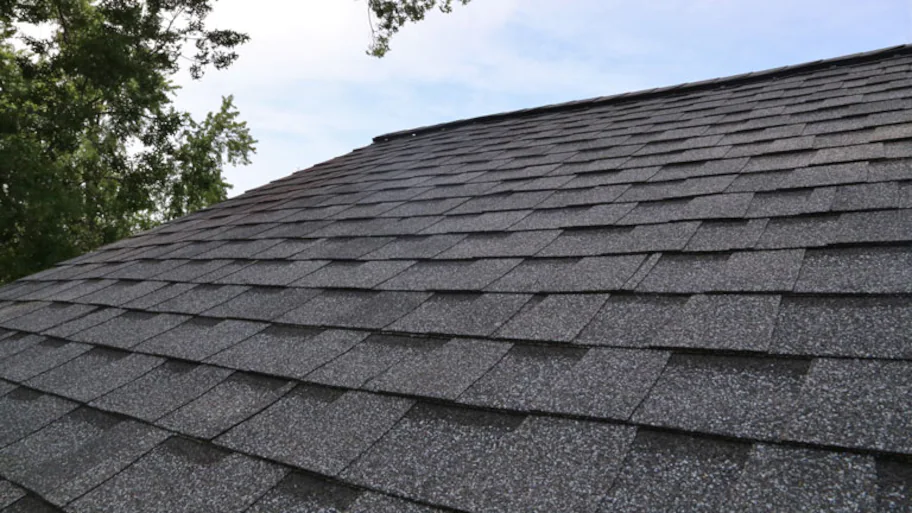Local Insights on Roofing Companies Gainesville Florida Homeowners Prefer
Wiki Article
Ideal Practices for Ensuring Proper Roof Covering Air Flow
Guaranteeing proper roof covering ventilation is essential for the longevity and efficiency of a roof system. A well balanced intake and exhaust air vent proportion, commonly 1:300, plays a critical function, with intake vents ideally put at the reduced edge of the roofing system for trendy air entrance and exhaust vents at the top for cozy air leave. Regular inspections to determine blockages and preserve clear airflow are extremely important. Furthermore, keeping insulation far from vents is vital to avoid air flow limitation. Recognizing these fundamental aspects establishes the phase for even more comprehensive understandings right into installment and maintenance practices that can dramatically enhance your roof's efficiency.Understand Air Flow Essentials
Properly comprehending ventilation fundamentals is crucial for guaranteeing the durability and performance of roof. Effective ventilation reduces wetness buildup and temperature level extremes in the attic room, both of which can lead to significant structural damage in time. A well-ventilated roofing system assists in protecting against usual concerns such as mold and mildew development, timber rot, and ice dams, which can endanger the honesty of the roof products and the underlying structures.The primary goal of air flow is to assist in the motion of air, permitting a constant exchange between the outdoor and indoor environments. This balance is attained via a mix of intake and exhaust vents that function with each other to preserve optimum airflow. Intake vents, normally located along the eaves or soffits, allow fresh air to go into the attic room area, while exhaust vents, frequently situated at or near the roof covering ridge, make it possible for hot, moist air to leave.
Trick factors influencing the effectiveness of roof covering air flow include appropriate placement, appropriate sizing, and making sure that both intake and exhaust vents are unobstructed. Routine evaluation and upkeep are essential to recognize potential clogs, damage, or ineffectiveness in the air flow system, thereby guarding the roofing's performance and longevity.
Types of Roofing Vents
Roof covering vents play a critical function in keeping reliable attic room ventilation and, by extension, the general wellness of the roofing system. Various sorts of roofing system vents are available, each with one-of-a-kind benefits customized to details roofing demands. Ridge vents, for instance, are mounted along the roofing system's peak, allowing warm, moist air to escape from the attic. They supply constant ventilation and mix perfectly with the roofline, making them both effective and visually pleasing.
Soffit vents are set up under the eaves and operate in tandem with roofing vents to make sure a balanced consumption and exhaust system. By permitting cooler air to get in from below, soffit vents promote the expulsion of warm air through upper vents. Gable vents, situated on the exterior wall surfaces of the attic room, deal an additional reliable solution, especially in homes with saddleback roofs.
Examine Your Present Ventilation

Following, consider the age and condition of your roof products and ventilation parts. Older systems may not follow current building ordinance or may have degraded in time, reducing their performance. Conduct a comprehensive evaluation to recognize any type of signs of deterioration, such as corrosion, damage, or spaces that might endanger the system's efficiency.
Additionally, determine the attic room temperature and humidity levels. Heats and moisture can show inadequate air flow - roofing companies in gainesville florida. Utilize a hygrometer and thermostat to obtain accurate analyses, comparing them with outside problems. Relentless discrepancies recommend prospective concerns that need attending to.
Setup Best Practices
anchor Efficient installation of roof air flow systems is extremely important for making sure ideal efficiency and click now durability. Correct installment starts with understanding the particular air flow requirements of the building and the roofing system it covers. This includes determining the appropriate ratio of intake to wear down vents, commonly adhering to the 1:300 policy, which states one square foot of air flow for every 300 square feet of attic flooring area.
Intake vents must be mounted at the roofing system's reduced edge, usually in the soffits, to allow great air to go into. Exhaust vents, on the various other hand, should be installed near or at the roofing's top to promote the departure of cozy, moist air.
Seal all air vent connections carefully to stop air leakages and possible water seepage. Use top notch materials and comply with maker standards to ensure durability and efficiency. Additionally, integrating ridge vents with baffles can significantly improve gainesville roofing companies air flow effectiveness by protecting against wind-driven rain and snow from going into the attic.
Eventually, precise installment of roof covering air flow systems minimizes possible issues such as mold growth, ice dams, and architectural damage, guaranteeing the roofing system's stability and the building's general health and wellness.
Routine Upkeep Tips
Consistency in maintenance practices is basic to making sure the lasting efficiency of roof covering ventilation systems. Throughout these inspections, guarantee that vents are cost-free of debris, nests, and various other blockages that can hinder air flow.
Make use of a soft brush or a vacuum to eliminate dirt and debris from consumption and exhaust vents. Be cautious not to damage the air vent displays or louvers throughout the procedure.
Proper insulation is similarly vital. Make certain that attic insulation does not obstruct the vents, as this can significantly restrict air flow. Rearrange or change it to keep an efficient obstacle. if any type of insulation has shifted or worked out.
Finally, change any type of harmed or missing parts quickly. Broken vents, fractured shingles, or shabby flashing can all contribute to poor air flow and must be resolved without delay. Normal upkeep makes certain that the roof covering ventilation system works efficiently, thus prolonging the lifespan of the roof itself.
Conclusion
Ensuring appropriate roofing ventilation is vital for preserving the effectiveness and resilience of a roof system. Adherence to the 1:300 consumption and exhaust vent ratio, combined with the calculated placement of vents, is necessary.A well balanced consumption and exhaust vent proportion, commonly 1:300, plays an essential duty, with intake vents preferably placed at the reduced edge of the roof for awesome air entrance and exhaust vents at the optimal for warm air departure. Intake vents, usually located along the soffits or eaves, enable fresh air to enter the attic area, while exhaust vents, commonly positioned at or near the roof ridge, allow hot, damp air to leave.
Soffit vents are installed under the eaves and work in tandem with roofing system vents to make sure a well balanced intake and exhaust system. By enabling cooler air to get in from below, soffit vents help with the expulsion of hot air via top vents. Adherence to the 1:300 consumption and exhaust air vent ratio, paired with the critical positioning of vents, is crucial.
Report this wiki page